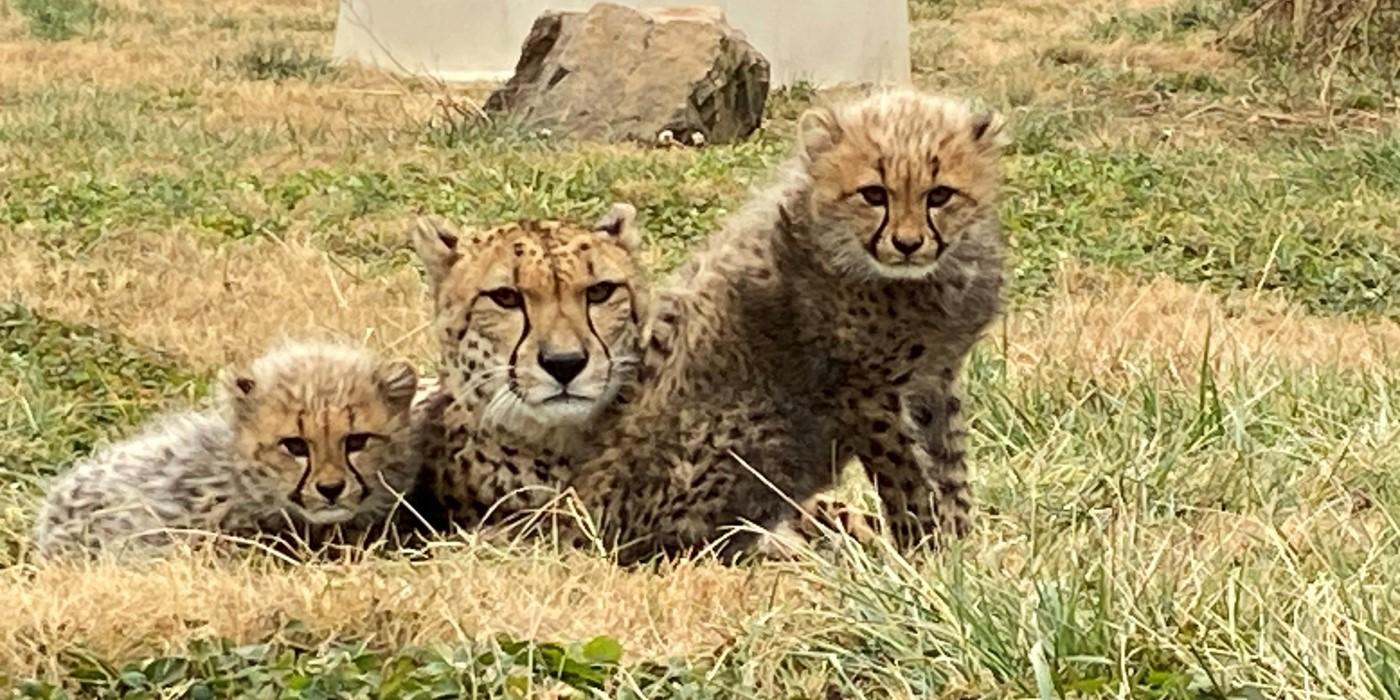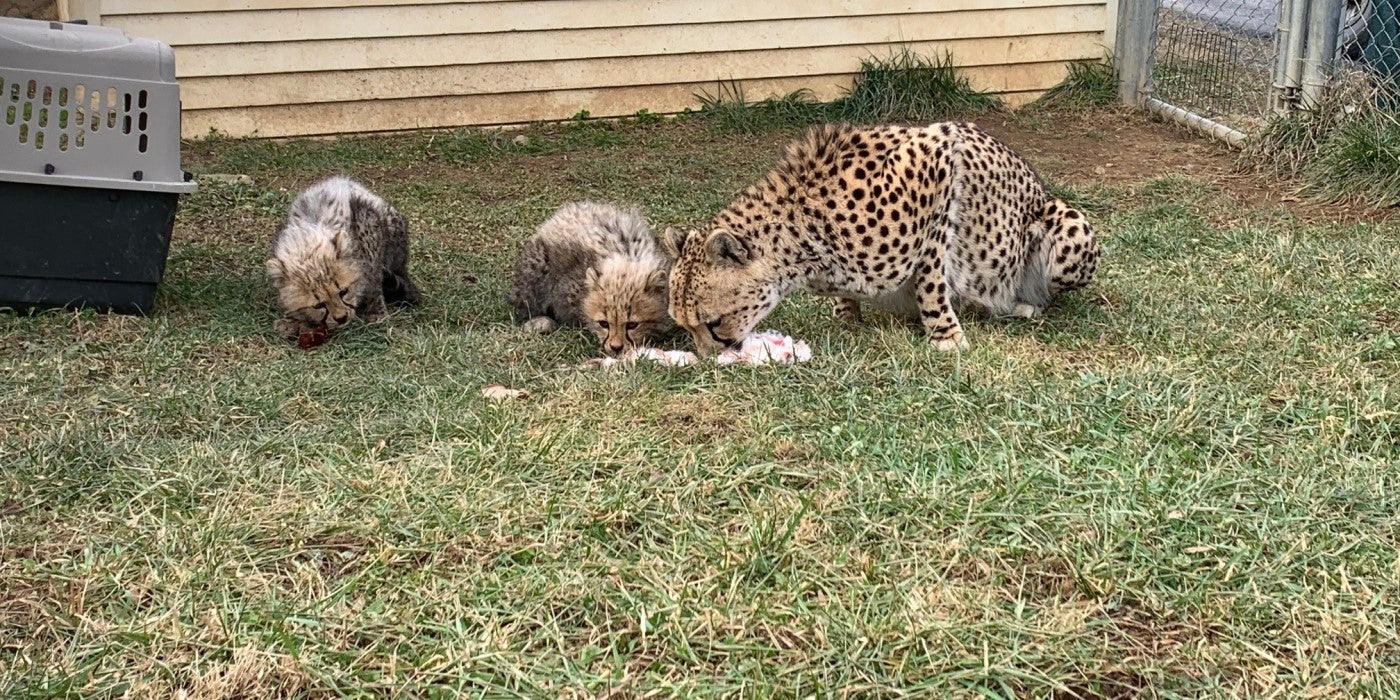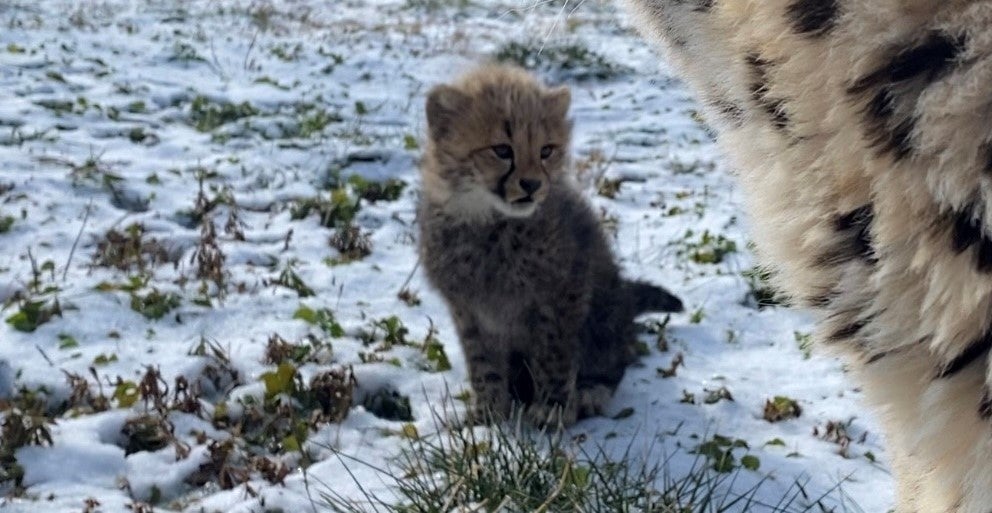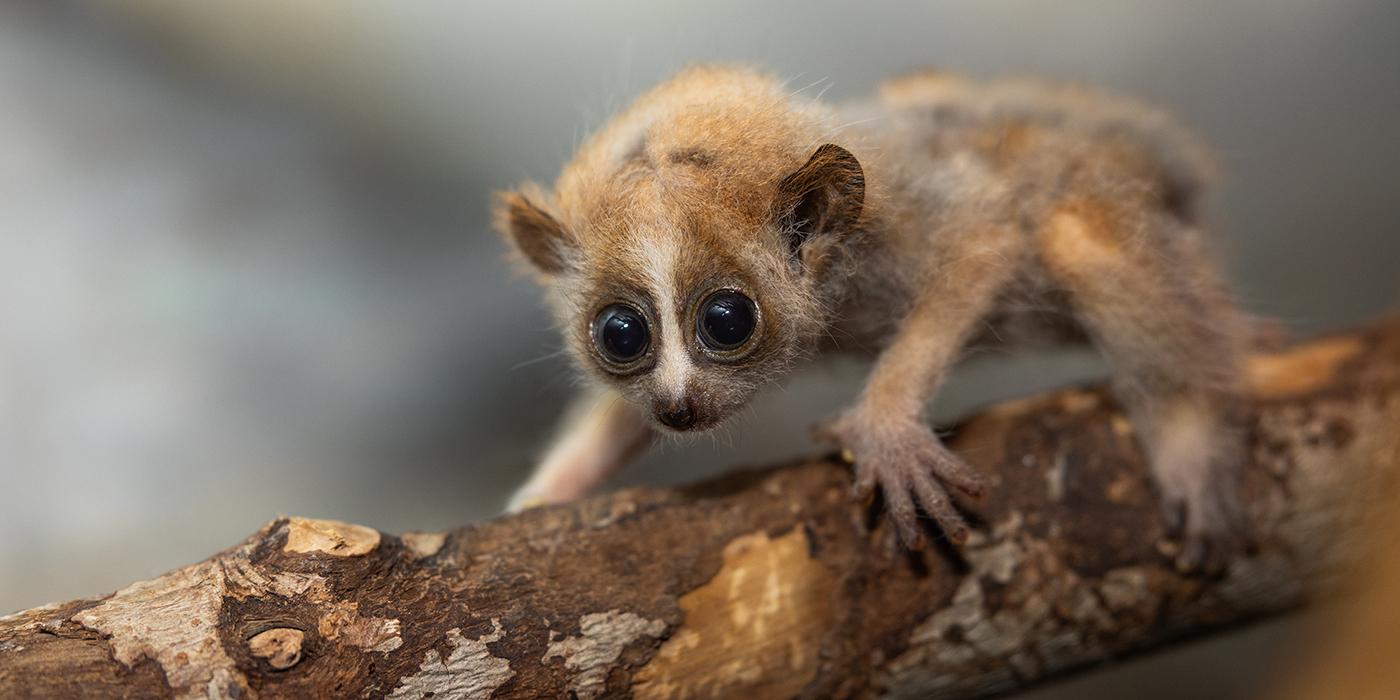#CheetahCubdate 6: New Year, New Food and the First Snow

Amani and her 3-month-old cubs are entering the new year with new experiences and a clean bill of health.
Earlier this week the cubs received their first whole-prey item: a frozen-thawed rabbit. Sometimes cubs aren’t sure what to do with these prey items until their mom shows them, but these two cubs took to them very quickly and seemed excited to eat them!

In the wild, a mother cheetah hunts and shares her prey with her cubs. Carcass feedings, like the rabbits, mimic some of this experience for cheetahs in human care. Whole-prey items are important for the cheetahs’ overall health. The skin, fur and bones are full of fiber and aid in the digestive process. Internal organs are rich in nutrients that help the young cubs grow big and strong. Finally, chowing down on prey helps strengthen jaw muscles and keeps their teeth healthy.
Right around the new year, the cubs had their 12-week-old veterinary exam. I’m happy to report both boys received a clean bill of health! We’re still working to build positive relationships with the cubs, which are the foundation for husbandry training.

As with all our animals, we are training the cubs to voluntarily participate in their healthcare. Training sessions are always voluntary. The cubs can choose to participate or walk away. If they stay and at least attempt the behavior we’re asking, we reward them with a favorite food. This is known as positive reinforcement training.
For these cubs, the first step in training was to have them come into the stall. At the time of our last update, they had just started to peer into the stall while eating meat from a tray in the doorway. Now they are much more confident. The cubs will readily come into the stall and will even get onto the adult scale for a small meat reward! This is great because now we can check their weights whenever we need to.
The next goal is to have the cubs walk into a carrier for their next veterinary exam, which is at the end of January, when the cubs are 16 weeks old.

In late December, Front Royal, Virginia, experienced a cold snap and the first snow of the season! We did see the cubs chasing each other and wrestling in the snow a bit, but the family seemed largely unaffected. In general, the cubs are very laid back, inquisitive and relatively unflappable – just like their mother.
Viewers of the Cheetah Cub Cam should keep an eye on the cam’s weather forecast widget this winter. On colder days, the family does spend more time in the dens. They especially favor the heated one which is equipped with a cam!
Stay tuned for more adorable updates on our growing cubs and we wish you a happy 2023!
Catch up on previous #CheetahCubdates here.
Related Species:


